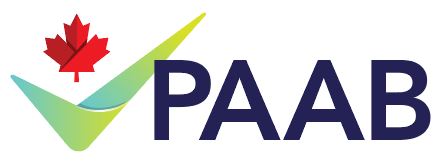176 - Is there any guidance about websites designed for the provision of medical information to registered heath care profesionals in Canada. These sites are non-promotional and allow HCPs to access information after having completed a specific search on their own. The obvious advantage is to allow 24/7 access to information useful to help in patient care.
-
The Food and Drugs Act, the PAAB Code and The Innovative Medicines Canada Code of Ethical Practices have requirements regarding provision of information when it is "advertising".
Advertising is regulated, non-advertising information is not regulated.
The Health Canada document "The Distinction Between Advertising and Other Activities " states the requirements to make information become non-advertising in any media. The "PAAB Code of Advertising Acceptance" covers internet activities sponsored by pharmaceutical companies. See also the Health Canada policy "Health products advertised on physician websites". Therefore, if the site is truly non-promotional, it is not regulated.
The following best practices would increase your chances of keeping the site outside of the "advertising" (i.e. regulated) realm:
- The website shall be set up such that the process for requesting information mirrors the process a healthcare professional would follow if they were to call the Medical Information Department directly.
- The platform is kept separate and distinct from any advertising. This service will be defined by the following three characteristics: restricted access, specific key-word based searches, and documentation.
Restricted access: For example, only healthcare professionals can access the website. They do so by entering a user name and password provided after completing registration. Registration includes a mechanism which ensure that the registrant is indeed a healthcare professional.
Specific key word searches: For example, medical information responses provided in the form of medical information letters (MILs) addressing specific questions. The MILs would be the same as those used to respond to verbal requests. The MIL responses would be accessible by entering specific key words into a search engine. Those key words are exclusive to each letter such that a key word entered could only result in the retrieval of one letter (i.e. it will not be possible to perform general searches based on text words).
Documentation: For example, the system would be configured such that it is possible to identify users to whom specific MIL responses have been provided. The user, the date, the keyword search and the information provided would be recorded by the system.
-
The Food and Drugs Act, the PAAB Code and The Innovative Medicines Canada Code of Ethical Practices have requirements regarding provision of information when it is "advertising".
Advertising is regulated, non-advertising information is not regulated.
The Health Canada document "The Distinction Between Advertising and Other Activities " states the requirements to make information become non-advertising in any media. The "PAAB Code of Advertising Acceptance" covers internet activities sponsored by pharmaceutical companies. See also the Health Canada policy "Health products advertised on physician websites". Therefore, if the site is truly non-promotional, it is not regulated.
The following best practices would increase your chances of keeping the site outside of the "advertising" (i.e. regulated) realm:
- The website shall be set up such that the process for requesting information mirrors the process a healthcare professional would follow if they were to call the Medical Information Department directly.
- The platform is kept separate and distinct from any advertising. This service will be defined by the following three characteristics: restricted access, specific key-word based searches, and documentation.
Restricted access: For example, only healthcare professionals can access the website. They do so by entering a user name and password provided after completing registration. Registration includes a mechanism which ensure that the registrant is indeed a healthcare professional.
Specific key word searches: For example, medical information responses provided in the form of medical information letters (MILs) addressing specific questions. The MILs would be the same as those used to respond to verbal requests. The MIL responses would be accessible by entering specific key words into a search engine. Those key words are exclusive to each letter such that a key word entered could only result in the retrieval of one letter (i.e. it will not be possible to perform general searches based on text words).
Documentation: For example, the system would be configured such that it is possible to identify users to whom specific MIL responses have been provided. The user, the date, the keyword search and the information provided would be recorded by the system.
Hi @jennifer-carroll, would the keyword-based search functionality still be a best practice in the case of a restricted access informational website designed to cover the multi-step answer to a common hospital logistical question "How do I order medicine Z, prepare it, and dispose of it?" (with no mention of therapeutic indication)?
-
Hi @jennifer-carroll, would the keyword-based search functionality still be a best practice in the case of a restricted access informational website designed to cover the multi-step answer to a common hospital logistical question "How do I order medicine Z, prepare it, and dispose of it?" (with no mention of therapeutic indication)?
Hey @taylor-murphy
Assuming “restricted access informational website” refers to a post-gate medical information site (non-advertising), a keyword-based search functionality is still considered best practice. As a reminder, the medical information letter (MIL) responses should only be provided in response to a specific request. Therefore, the keyword-based search functionality should be set out to require narrow searches that yield narrow search results. For example, the user would have to search “[drug name] AND order AND prepare AND dispose” (using the Boolean operator “AND”) for this MIL response to come up. Searching any one word, “order”, “prepare” or “dispose” should not bring up this article as the topics discussed within the MIL response go beyond the single term searched.
